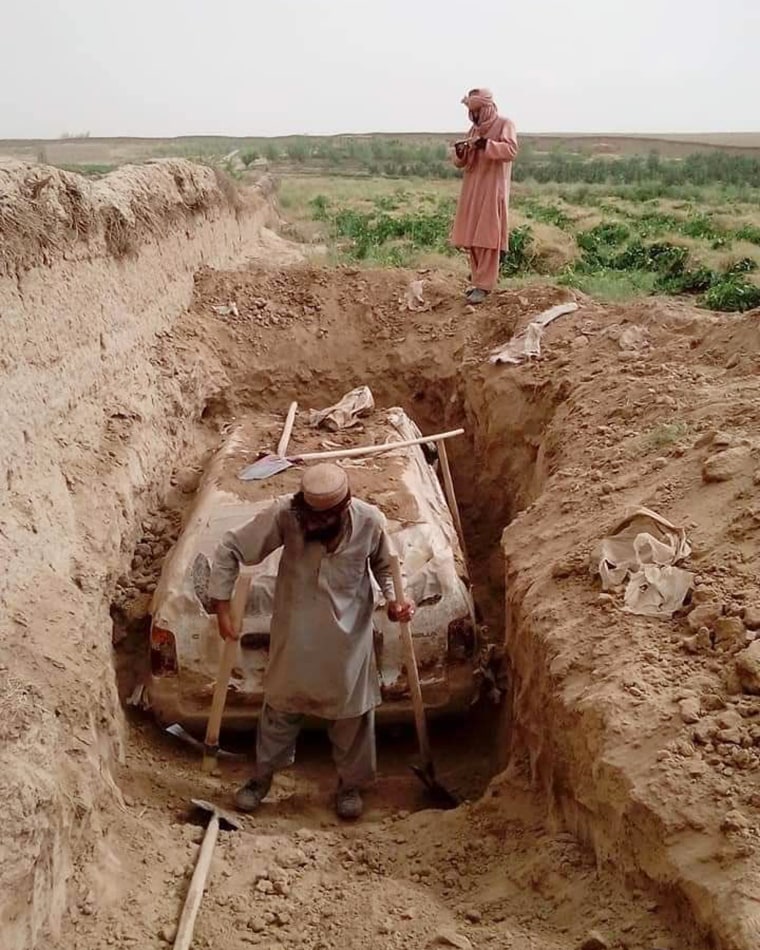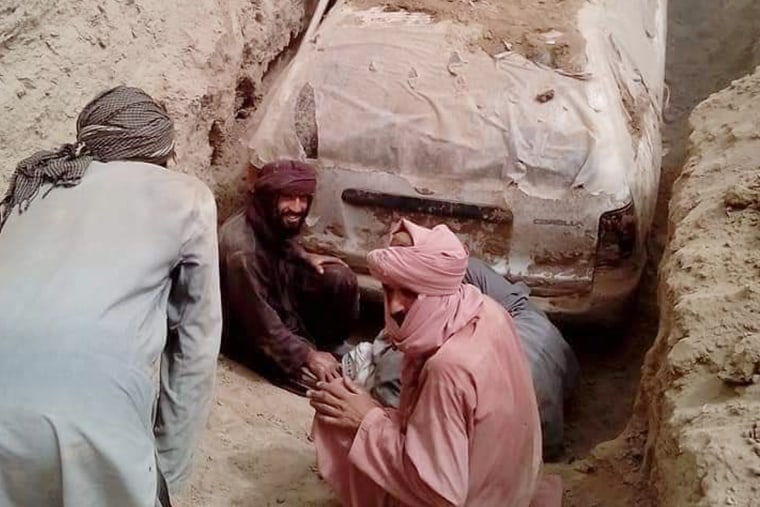An old white Toyota Corolla wagon has been excavated in southern Afghanistan as the Taliban dig up new ways to display their hold over power in the country.
The vehicle was used by the militant group’s founding leader, Mullah Mohammad Omar, to escape U.S. troops after they invaded in 2001.
It had been buried in a previously unidentified location, but was unearthed Tuesday after Omar’s grave was identified in Zabul, a province in the country’s south.
“The car belongs to our late dearest supreme leader and it will be moved to a museum,” Maulvi Arifullah, an official at the Interior Ministry, told NBC News.
Omar had fled in the Toyota car from Kandahar to Zabul at the beginning of the U.S.-led invasion, the Taliban said. He continued to live in hiding in a small mud house until his death in 2013, but with the group ruling Afghanistan once again after the U.S. withdrawal, his Toyota may soon be on public display.
Anas Haqqani, a Taliban leader, urged on Twitter for the vehicle to be placed in the National Museum of Afghanistan in Kabul.

Photos of the excavation showed the vehicle covered in plastic sheeting and dirt. Cleaning and maintenance works on the vehicle were ongoing.
Omar was famously one-eyed, having lost his right eye to a shrapnel injury fighting Soviet troops who occupied Afghanistan in the 1980s.
Experts say the move to excavate his car is an attempt by the hard-line Islamic movement to consolidate power over the country, which is facing an economic and hunger crisis after foreign powers cut off humanitarian aid over its restrictions on women’s rights and other liberties.
“The Taliban are trying to consolidate their power by resurrecting symbols of their own history,” Shuja Nawaz, a political analyst at the South Asia Center at the Atlantic Council, a Washington, D.C.-based think tank, said Wednesday.
“They do not respect the history and culture of other sects of Islam or of other religions.”
The devastation wrought by an earthquake that claimed more than 1,000 lives in late June has also exposed the Taliban’s poor governance over the country, he added.
Other experts noted the irony in the Taliban’s efforts to memorialize the vehicle when they have destroyed much of Afghanistan’s cultural heritage.
The retrieval and planned veneration of the car follow years of systematic destruction of ancient cultural sites and relics in Afghanistan, a continuation of the extremist ideology the group enforced in the country during its rule from 1996 to 2001, and since it swept back into power last August.
Months before losing control of Afghanistan in 2001, the Taliban shocked the world when they destroyed giant Buddhas dating to the sixth century engraved into cliff faces in Bamiyan Valley. The group has since attempted to revive the site as a tourist attraction, encouraging the public to visit the cavities where the statues once stood.
“There is a bittersweet irony in the Taliban’s unearthing of Mullah Omar’s Toyota ... given their disrespect for much of Afghanistan’s history and culture,” said Emily Winterbotham, director of the terrorism and conflict research group at RUSI, a British security think tank.
“Memorialization of past conflicts in Afghanistan has largely focused on glorifying leaders, with the experiences of victims ignored,” she added. “Putting the car on display in the country’s national museum shows that little has changed.”
